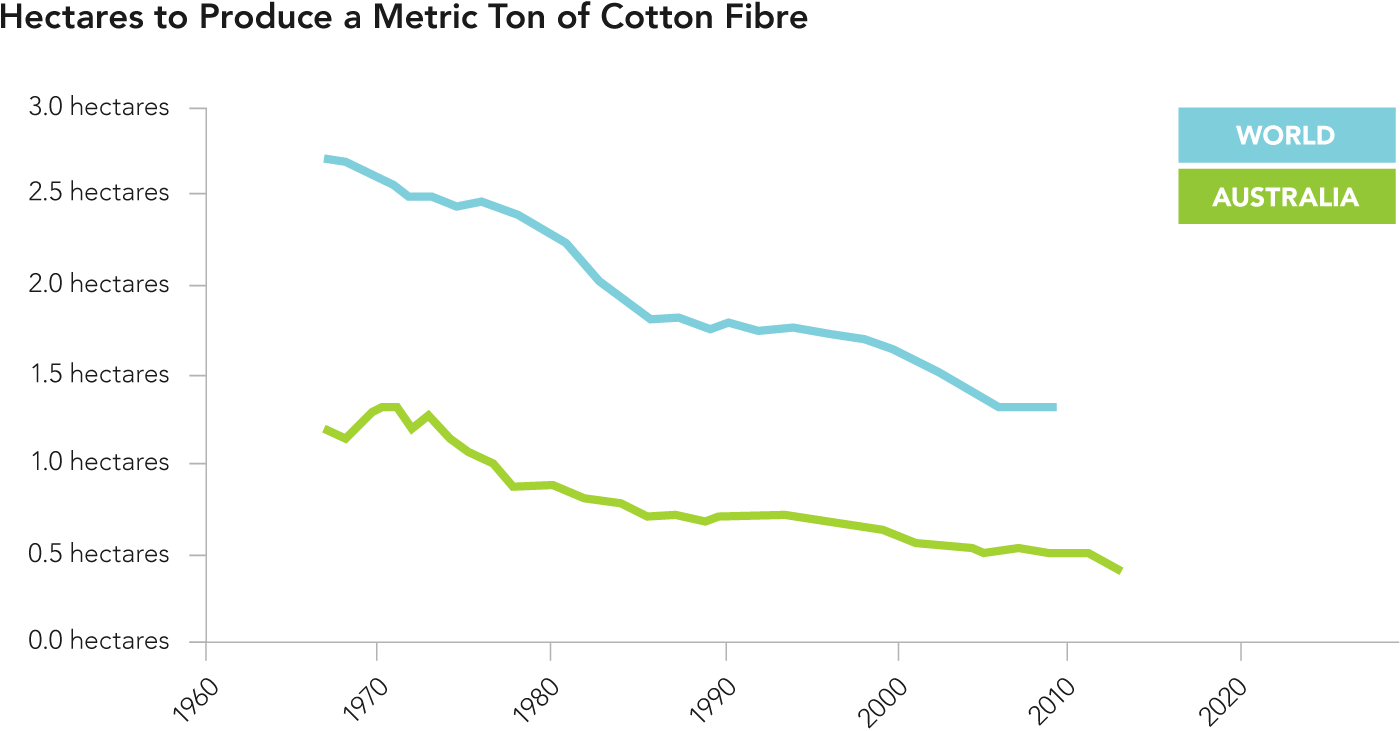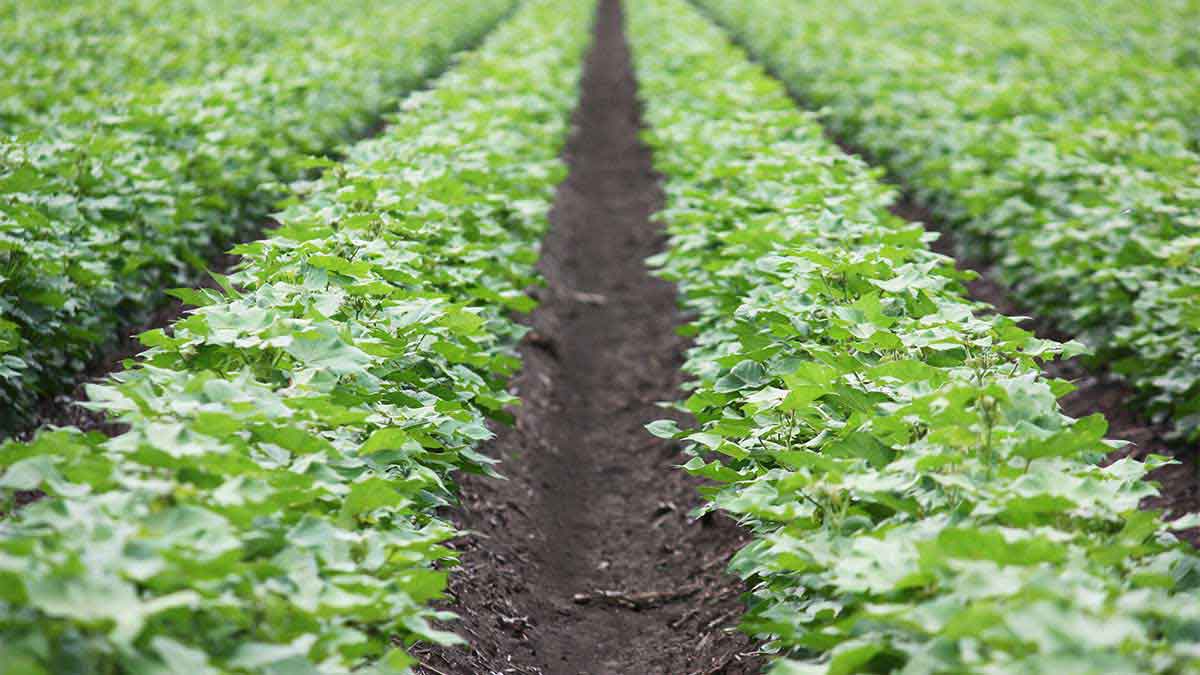Land and Soil – Australia
Better soil, record yields
Today’s Australian cotton industry is efficient, community minded, resilient and technologically advanced. Nearly three times less land is required to produce one metric ton of cotton fiber in Australia compared to the rest of the world. Yields have continued to move upwards from 1200kg/ha in the 1970s and can now be greater than 2270kg/ha (10 bales/ha).

One factor in this accomplishment is ongoing soil conservation. Soil is one of agriculture’s most fundamental resources and a study in nature’s patience. It’s continually being produced from parent material – and continually being lost to wind and rain.
Modern cotton production practices, such as reduced tillage, stubble retention and crop rotation, allow growers to achieve high levels of soil conservation while increasing soil health. The outcome: increased yield, more efficient use of water and fertilizer, and a better long-term outlook for the farm’s productivity.
The myBMP program underpins the industry’s best practices for soil health and includes 28 checklist items to ensure:
- Crop nutrient requirements are managed efficiently and effectively
- Nitrogen use is effective and efficient
- Management decisions and practices take into consideration the impact on soil carbon levels
- Soil salinity and dispersion risks are monitored and managed
- Erosion risks are monitored and managed
Saving our soils
Australian cotton is grown on floodplains where the soils are younger and more fertile than most Australian soils. The major soil types on which cotton is grown are grey, brown and black Vertosols (around 75 percent) that are naturally fertile, have high clay content and strong shrink-swell capacities. This makes them perfect for irrigation.
The cotton industry has invested in a substantial body of soil science research over the past two decades, with soil health being a critical component of the farming system and the myBMP program.
The main changes in management of cotton soils over the past 30 years have been an overall reduction in tillage, widespread adoption of controlled traffic-permanent bed farming systems, and increased application of nutrients in response to higher crop yields and the need for fertiliser replacement of nutrients.

Crop rotations vary considerably due to regional climatic and soil type differences as well as the prevailing price of cotton and alternative crops. Most farmers (75 percent) produce two or less cotton crops before breaking with an alternate crop or fallow.
In the 2011 grower survey, 58 percent of farmers reported a decrease in cultivation over the previous five years, and 97 percent of farmers incorporated their crop stubble rather than burn it.
In total, 52 percent of farmers used soil testing to aid fertiliser decisions, and 39 percent used manures or composts in their nutrition program. Controlled traffic farming systems were in use on more than 90 percent of farms to reduce soil compaction and to retain permanent beds.
Other practice changes include the use of precision agriculture and associated
technologies such as remote sensing, geographic information systems, yield mapping, variable rate applications and soil sensors such as electromagnetic induction.
Continue Reading:
Explore the research and resources we’ve pulled this information from.

